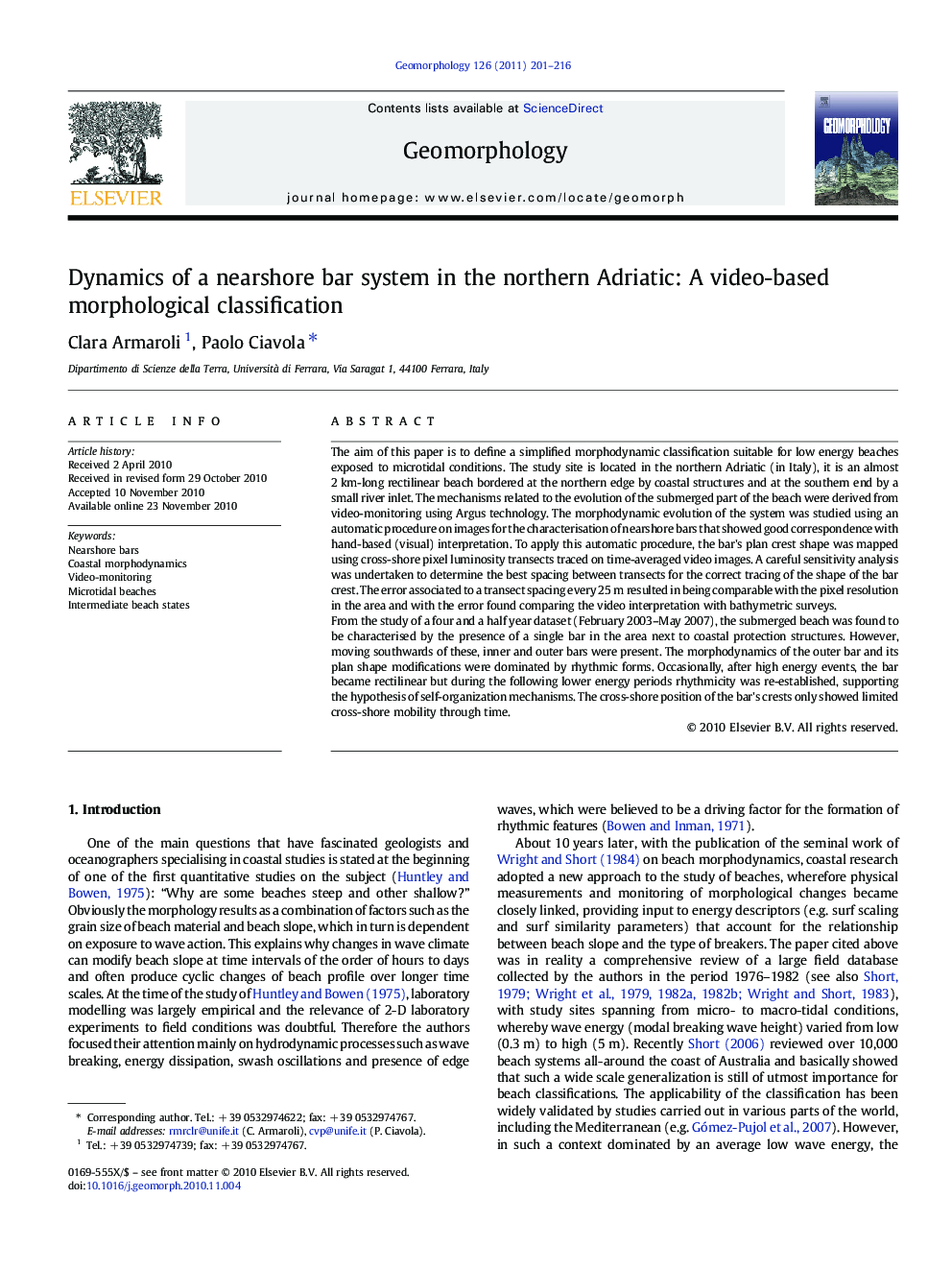| کد مقاله | کد نشریه | سال انتشار | مقاله انگلیسی | نسخه تمام متن |
|---|---|---|---|---|
| 4685673 | 1635509 | 2011 | 16 صفحه PDF | دانلود رایگان |

The aim of this paper is to define a simplified morphodynamic classification suitable for low energy beaches exposed to microtidal conditions. The study site is located in the northern Adriatic (in Italy), it is an almost 2 km-long rectilinear beach bordered at the northern edge by coastal structures and at the southern end by a small river inlet. The mechanisms related to the evolution of the submerged part of the beach were derived from video-monitoring using Argus technology. The morphodynamic evolution of the system was studied using an automatic procedure on images for the characterisation of nearshore bars that showed good correspondence with hand-based (visual) interpretation. To apply this automatic procedure, the bar's plan crest shape was mapped using cross-shore pixel luminosity transects traced on time-averaged video images. A careful sensitivity analysis was undertaken to determine the best spacing between transects for the correct tracing of the shape of the bar crest. The error associated to a transect spacing every 25 m resulted in being comparable with the pixel resolution in the area and with the error found comparing the video interpretation with bathymetric surveys.From the study of a four and a half year dataset (February 2003–May 2007), the submerged beach was found to be characterised by the presence of a single bar in the area next to coastal protection structures. However, moving southwards of these, inner and outer bars were present. The morphodynamics of the outer bar and its plan shape modifications were dominated by rhythmic forms. Occasionally, after high energy events, the bar became rectilinear but during the following lower energy periods rhythmicity was re-established, supporting the hypothesis of self-organization mechanisms. The cross-shore position of the bar's crests only showed limited cross-shore mobility through time.
Journal: Geomorphology - Volume 126, Issues 1–2, 1 March 2011, Pages 201–216